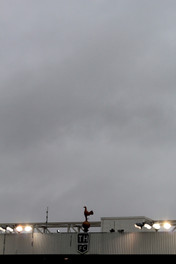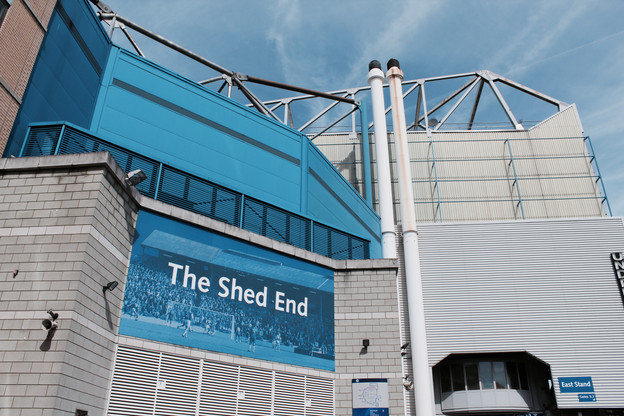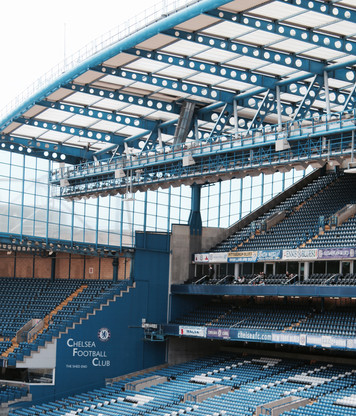Lost To The Past
- James Gamlin - Escapismo

- Feb 9, 2019
- 4 min read
Updated: Jul 22, 2019
The disappearing grounds of English Football.
In recent years, some of the most iconic and instantly recognisable stadiums across the country have seen their final matches played. The traditional, old-fashioned ground is slowly becoming a rare sight in England.
Although they are being replaced with stunning new arenas that have all of the facilities you can imagine, there always seems to be something missing from these new grounds that appears to have been left with their predecessors. The atmosphere, the wooden seats, the old dugouts and even the pillars. Well maybe not the pillars, but these are the things that make a ground a home, not just a stadium where a team happens to play. After all, concrete can only build you so much - it certainly can’t build character into a new ground.
In theory, adapting to life in a new stadium should be easy. It tends to be the same group of players, usually the same manager and the majority of the fans are the same people who went to the old ground. But most of the time there is that struggle to get to grips with it all. Perhaps its the pressure, the unfamiliarity or just the feeling that the new stadium just doesn't fit with the character or history of the club. It always seems that the main distinctive aspect that is left behind when any old ground is demolished is the atmosphere.
Upton Park is the prime example. Notorious for its roar and incredible noise on a matchday. Surrounded by houses, local shops and pubs, it was the heart of a community. Again it’s those minor details; the wooden seats, the cramped turnstiles and the claret and blue gates, that distinguished this old ground from any other. It was a cauldron on a match day, with a riot of noise and passion often giving the home side that extra edge. The way the stands were so close to the pitch really helped the fans to connect with the players and certainly made a visit to E13 and intimidating one for any opposing team.
It became well regarded as one of the traditional and classic grounds of England, and the move to the Olympic stadium was one that split opinion massively amongst West Ham fans. Many were optimistic, feeling that this move needed to be made in order for their side to progress and move forward as a club, whilst others questioned why it was necessary, how full the new ground would be and if there was anything wrong with the Boleyn as it was.
But few could have predicted the impact that the move would have on the identity of the East London side as a whole. From being within touching distance of the players to barely being able to see their shirt numbers is quite a contrast. Being separated by a running track certainly divides the way that the players are able to interact with the fans.
There have even been reports of opposing players stating how they enjoy playing at the London Stadium because the fans are so far away. It seems that the overall feel and aesthetics of the arena just don't project the image of West Ham that we are familiar with - one of tradition, a tightly enclosed ground, and a visible relationship between those in the stands and the 11 men on the pitch.

As football fans, we want to be able to see the facial expressions of the players when they run over to take a corner and get the crowd going, and we want to see the clump of grass that they take up as they make a sliding tackle on the touchline. It may be the minor aesthetics, but these are the things that make football what it is, do we really want to compromise this for 15,000 extra seats or a few more corporate boxes?
The new grounds will always amaze us in terms of their size and designs but it is difficult to leave the magic of an old stadium behind. Fans of different generations all share their own memories that can often represent different times in their lives: first games, promotions, relegations, classic cup matches, league titles - we all have our own personal accounts of where we were in the ground and who we were with. We often also remember roughly how old we were and what was going on in our lives at the time, and every stadium has its own character and rich history.
Highbury is another one of the classic stadiums of England and featured so many amazing players, goals and matches over the years. Although the club’s position at the time as one of the elite teams of Europe meant that a bigger ground was needed for them, it has not been a move that has allowed Arsenal to progress in the direction that it wished for.
There's just something about Highbury that's difficult to describe. When you first arrive, you hardly see the stadium and wonder where it is but then you find it between two blocks of flats.' - Thierry Henry

It seems to be the same scenario, time and again. As impressive and practical the new stadiums are, with every seat giving a brilliant view, plenty of facilities and hospitality suites, is this really worth having over the intangible allure that the older grounds were able to offer?
Tottenham have settled in well to their stunning new stadium, but the old White Hart Lane is yet another incredible ground that provided countless amazing moments and memories to so many people.
With Chelsea also planning to effectively knock down and completely rebuild Stamford Bridge in the coming years, it seems that the home grounds of our teams are slowly being lost to the past, and it must be asked, how many fans really want it to be this way.

































Comments